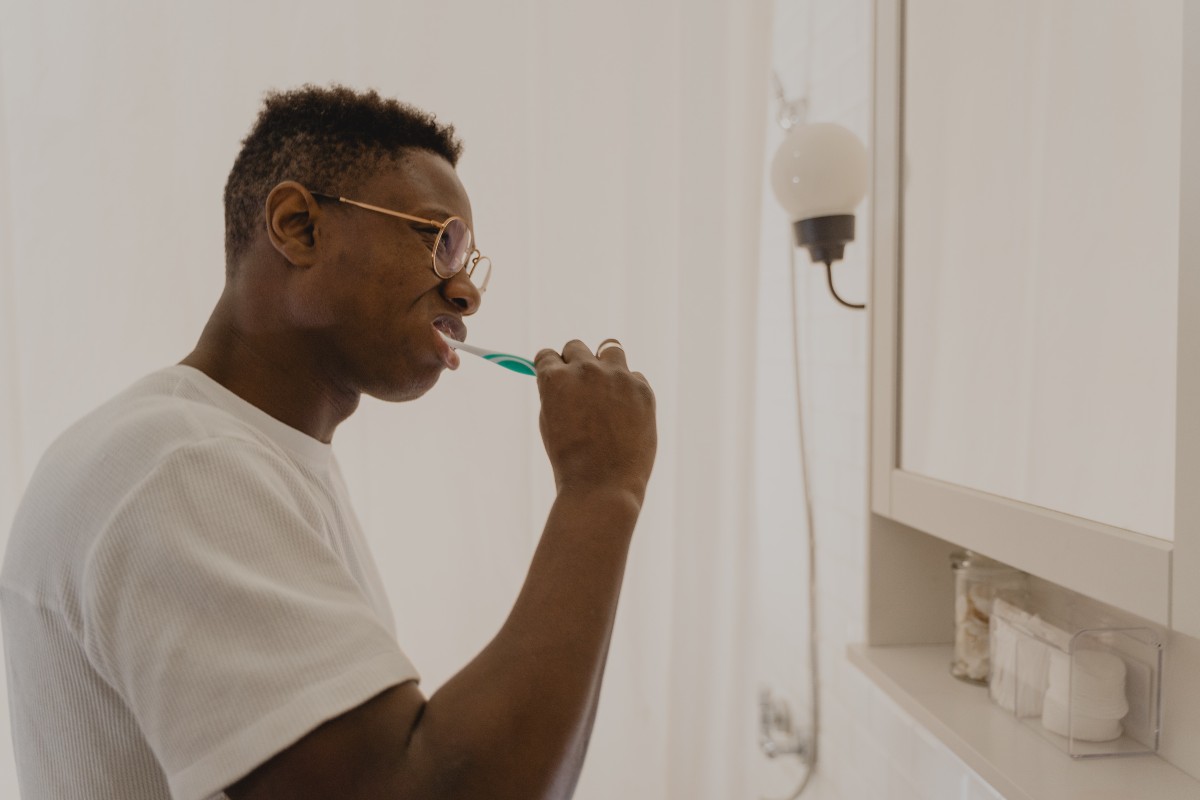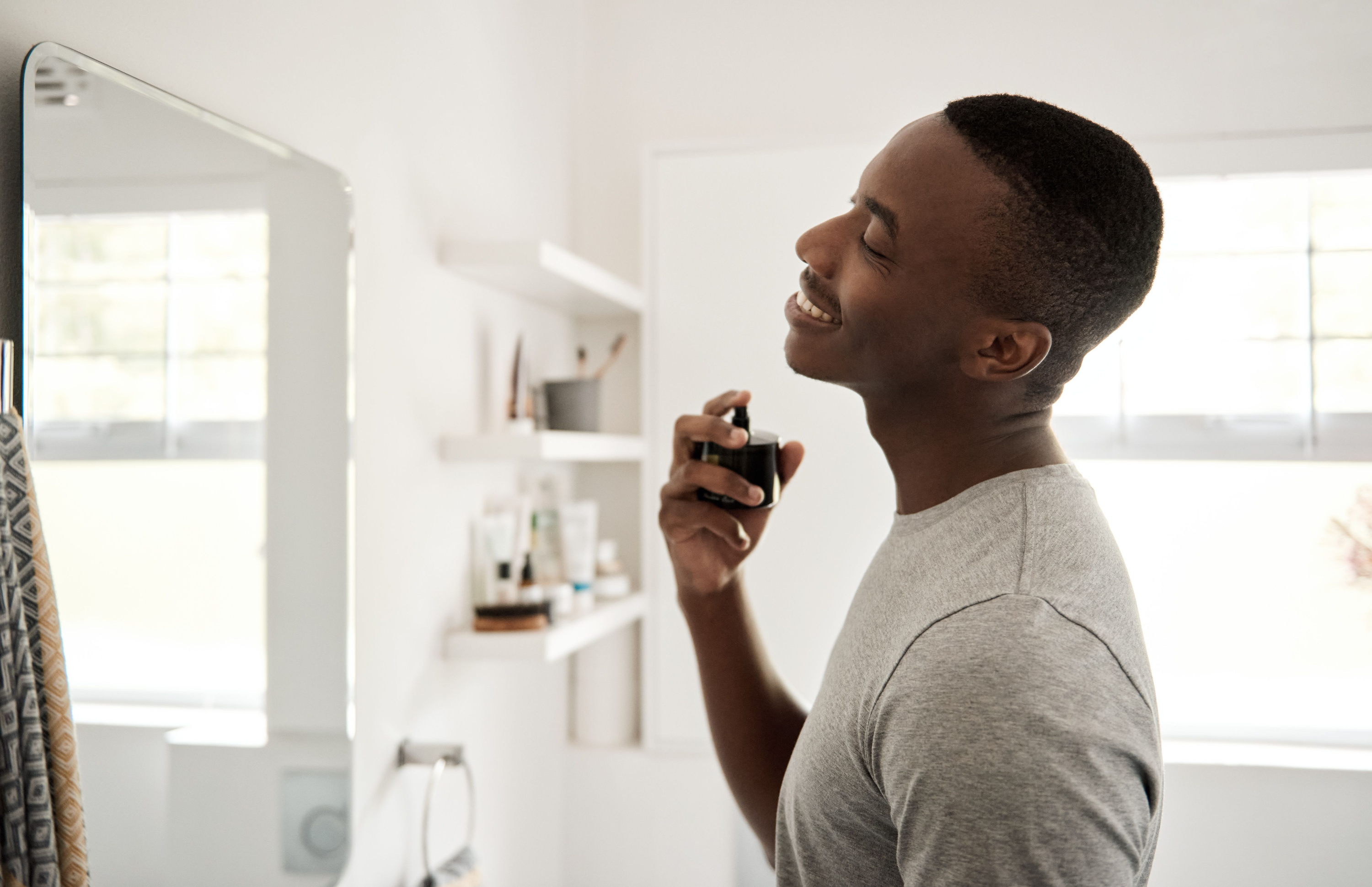They say the eyes are the window to the soul. However, you can make a strong case that the teeth actually are. Hear us out: You flash your chompers when you’re happy and grit them when you’re mad. People see them when you’re talking. You want to show off a bright, pristine appearance. However, age, dietary and other lifestyle habits, and medical conditions can turn those pearly whites into anything but. The good news: You can hit refresh and whiten teeth at home. That news is even better when you consider that professional teeth whitening can cost anywhere from $500 to $1,000 on average.
Skip the dentist’s office chair and whiten your teeth in the comfort of your bathroom. Here are the top tips on how to whiten teeth at home.

What causes discolored teeth?
Some reasons why teeth go from white to yellow, spotted, or brown are controllable. Others aren’t. These reasons include:
- Drinks: Coffee, tea, dark sodas like Coke, and red wine are all common culprits.
- Food: Starches like pasta and potatoes can also trigger stains.
- Tobacco use: Add this to your reasons to nix tobacco use this year — Smoking or chewing tobacco causes tooth discoloration.
- Dental hygiene: Things happen, but consistently skipping brushing and flossing and annual or bi-annual dental appointments add up to stained teeth.
- In-office medical treatments: Tooth discoloration is one possible side effect of treatments like head and neck radiation and chemotherapy.
- Medications: Childhood use of some medications, such as tetracycline and doxycycline, can affect enamel formation and cause tooth discoloration. Antihistamines like Benadryl may also discolor teeth.
- Aging: As you rack up the birthday candles, your outer layer of tooth enamel begins to wear away. This makes the yellow dentin, a yellowish tissue that comprises most of your teeth, more apparent.
- Genetics: A whiter and thicker enamel may or may not be part of your DNA.
- Fluoride: When your tooth enamel is developing as a child, getting too much fluoride, such as in tap water, can lead to fluorosis, which presents as white spots on the teeth.
Can yellow teeth become white again?
Yes, but it’ll take a bit of TLC. Yellow teeth can become white again, and other are tons of remedies on the market. It may be as simple as changing toothpaste, followed by some dietary tweaks, such as reducing coffee and red wine. (Sorry.) Other people may need to undergo teeth whitening in a dentist’s office, but over-the-counter products have also gotten better over the years and are worth a try as a first-line effort. Though you may not love the dentist, they can give you more tips catered to your unique smile.

Tips for how to whiten teeth at home
From natural approaches to OTC teeth whitening kits, here are some ways to get a brighter smile at home.
Consume enough calcium
One natural teeth whitening tip is to be sure to consume enough calcium. Calcium can protect against enamel erosion that can trigger discoloration, according to the American Dental Association (ADA).
Dairy products like cow’s milk are an obvious calcium source. Spinach, sardines, and dark, leafy vegetables are other options.
Find a toothpaste with hydrogen peroxide
Hydrogen peroxide has long been lauded for its ability to help clean wounds. It may also be beneficial as a toothpaste ingredient. A 2020 study found that toothpaste containing higher amounts of the natural bleaching agent helped people achieve whiter teeth in 12 weeks. It may cause some tooth sensitivity, though. If you notice sensitivity when brushing with toothpaste containing hydrogen peroxide, you may want to cease use. If you’re prone to tooth sensitivity, talk to your dentist before trying these toothpaste options.
Try toothpaste with baking soda
Baking soda is generally considered less irritating than hydrogen peroxide. Research indicates that consistently brushing with toothpaste containing baking soda will help reduce discoloration over time. Brushing with pure baking soda has not been proven to whiten teeth, and in fact might be too abrasive to use every time you brush.
Choose an over-the-counter teeth whitening kit
Pharmacies and other big-box retailers typically stock several teeth whitening kit options. These usually include special toothpaste and strips to use for a short period to help whiten teeth. They may be particularly helpful when you need a quick fix before a big day, such as a wedding. You may want to give them a test run beforehand to ensure they don’t cause irritation. Your dentist is a good resource for helping you find one right for you.
Practice good dental hygiene
One of the simplest ways to whiten teeth and keep them that way is to go back to basics. The ADA recommends brushing twice daily with a soft-bristled brush for two minutes at a time. Replace your toothbrush every three to four months or when the bristles are clearly damaged from fraying. Even a basic toothpaste without whitening benefits listed on the label will do — look for the ADA seal signaling that it’s been approved by the association, a respected source for clinical guidelines.

Ways to avoid tooth discoloration in the first place
It’s great that modern science and medicine have allowed us to learn and create ways to reduce some tooth discoloration. However, like many aspects of medicine, prevention is the best course. Here are a few ways to minimize your tooth discoloration risk:
- Quit smoking or chewing tobacco. Since tobacco stains teeth, avoiding it altogether can nix this risk factor. The rest of your body, including your lungs, will thank you. The CDC has resources for people looking to kick the habit.
- Limit coffee and red wine. You don’t have to stop consuming these beverages altogether, but moderation is key. One glass of wine with dinner every once in a while or a cup of coffee daily is probably fine. Just avoid going overboard.
- Limit sugar. Sugar is a leading cause of cavities, and sugary beverages like dark sodas also cause discoloration. Put foods and drinks high in sugar on your “sometimes” list.
As great as at-home teeth whitening is, it is not a replacement for regular dental check-ups. What’s more, your dentist can be a resource for ways you can prevent discoloration and whiten teeth. They can also flag and help you with other issues that may affect your smile and even cause pain, including tooth decay, gum recession and disease, and shifting teeth. Even people who forgo alcohol and brush twice per day will likely encounter some dental issues, particularly because age is a factor for many issues, so don’t skip this step — even if going to the dentist isn’t the most fun activity.




